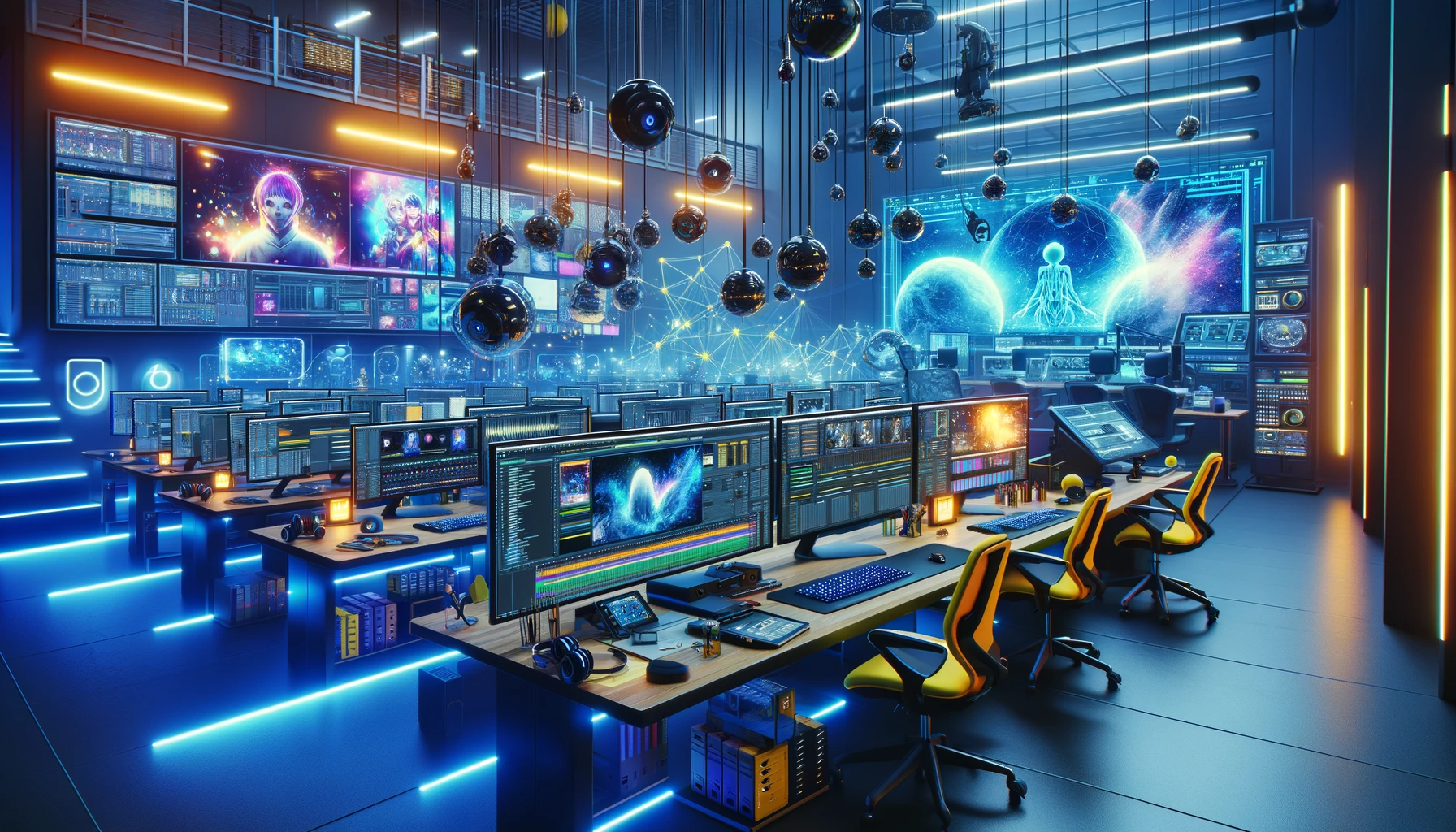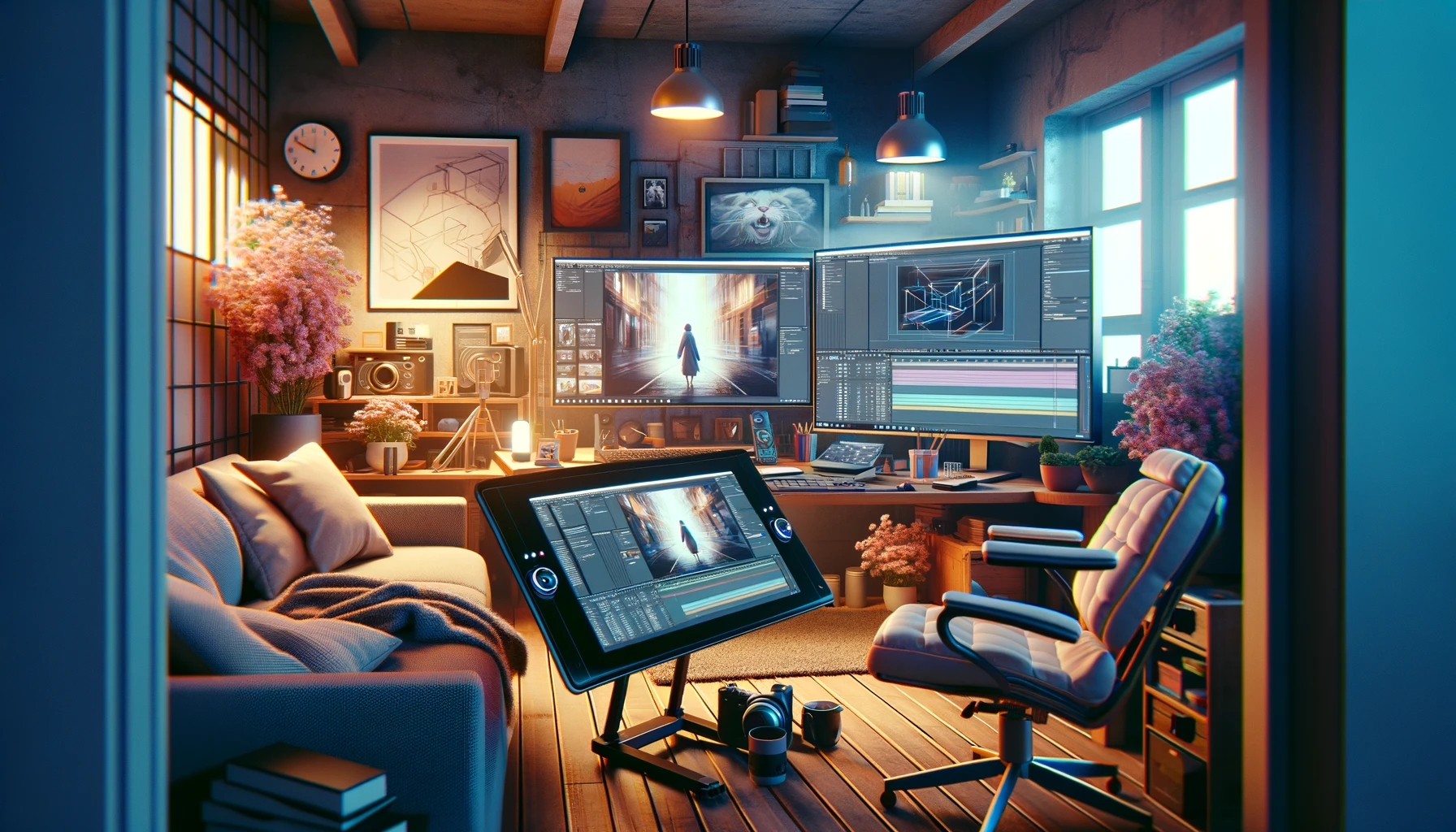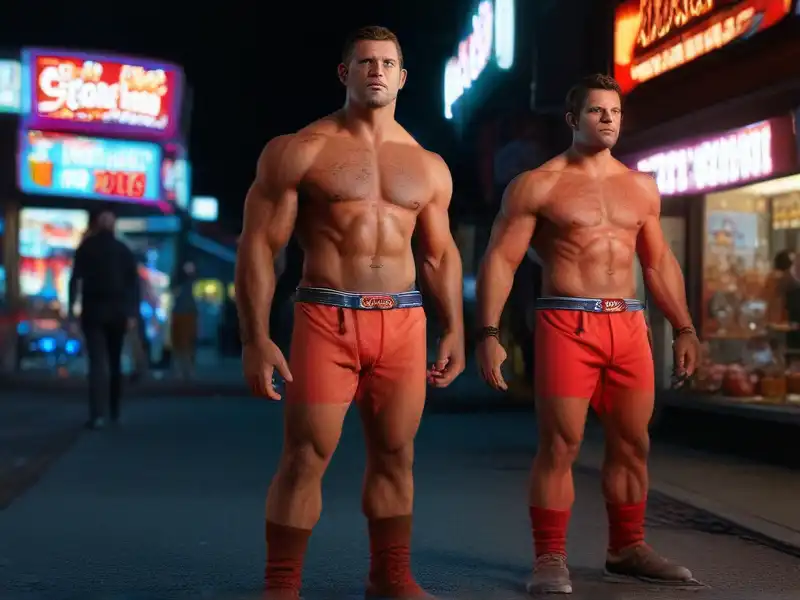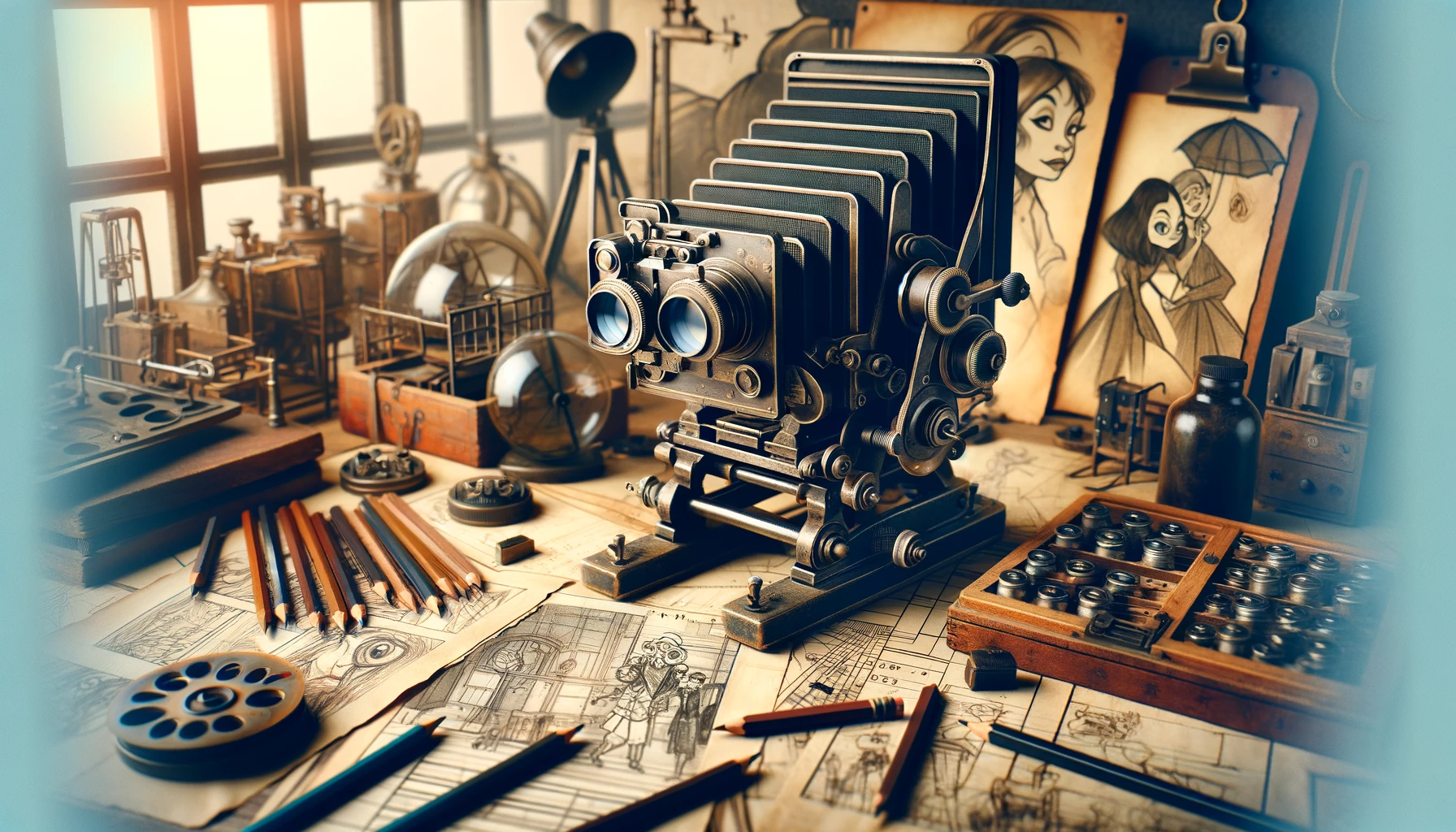Animation in the Future: What's in Store for the Industry in the Coming Decade
The animation industry, a dynamic and ever-evolving sector, is on the cusp of a transformative period. As we look ahead to the next decade, it is becoming increasingly apparent that the animation landscape is poised for significant change, driven by advancements in technology and shifts in storytelling and consumption patterns. This blog aims to explore the key trends that will redefine how animated content is produced, consumed, and experienced. It will offer a glimpse into a future filled with potential, where the boundaries of animation are being pushed and new possibilities are emerging.
Animation achievements
The animation sector was always at the cutting edge of technological innovation, and the next decade promises to push these boundaries even further. This growth is largely fueled by the adoption of advanced tools and software, revolutionizing the animation process.
Real-Time Animation
One of the most significant developments in recent years is the emergence of real-time 3D animation engines, such as the Unreal Engine and Unity.
These platforms are transforming the animation landscape by enabling creators to craft more dynamic and interactive content than ever before. The power of real-time animation stems from its ability to provide immediate feedback, enabling animators to make changes on the spot and significantly streamlining the production process. This immediacy not only enhances creative freedom but also opens up new opportunities for storytelling and audience engagement.
Artificial Intelligence and Machine Learning
Another area of technological advancement that is being explored is the integration of artificial intelligence (AI) and machine learning (ML) into the animation process. According to research conducted by Accenture, AI-powered tools have the potential to reduce production times by up to 40%. This represents a significant efficiency gain that has the potential to significantly impact the economic landscape of the animation industry.

VR And AR
The fields of virtual reality (VR) and augmented reality (AR) are emerging as promising areas for innovation in the animation industry. As these technologies become increasingly accessible, animators are investigating methods to create immersive experiences that combine the digital and physical worlds. This includes everything from interactive narratives and virtual worlds to AR overlays, offering audiences new ways to experience stories and blurring the lines between animation and reality. The potential for VR and AR in animation is vast, promising to redefine the parameters of animated content and audience interaction.
The Evolution of Animation Styles and Storytelling
As the animation industry braces for a decade filled with technological advancements, it's equally important to address the shifts in narrative approaches and visual storytelling techniques. The evolving landscape is not just a testament to how animations are made but also to what stories are told and how they are expressed. This evolution in animation styles and storytelling signifies a maturing of the medium, moving beyond conventional boundaries to embrace diversity, experimentation, and emotional depth.
Increased Diversity and Representation
In recent years, there has been a noticeable push towards more inclusive and diverse representation within animated content. This trend is set to continue and expand in the coming decade, driven by a growing audience demand for stories that reflect a broader spectrum of experiences, identities, and cultural backgrounds. Animation studios and creators are recognizing the importance of crafting narratives that are not only entertaining but also resonant and reflective of the world's diversity. This shift towards inclusivity is not merely a response to societal calls for representation; it's an acknowledgment of animation's potential to influence and shape perceptions. By embracing diverse characters and storylines, the animation industry can play a pivotal role in fostering understanding and empathy across different communities.
Experimental and Hybrid Styles
The fusion of traditional animation techniques with digital innovations is giving rise to experimental and hybrid styles that challenge our notions of what animation can be. Animators are increasingly blending hand-drawn elements with CGI, incorporating live-action footage, and experimenting with various media to create unique visual experiences. This hybridization not only pushes the aesthetic boundaries of animation but also opens up new avenues for storytelling. By combining different techniques and styles, creators can convey themes and emotions in multifaceted ways, enhancing the narrative's impact. This era of experimentation is indicative of an industry that is not content with staying within established paradigms but is constantly seeking to innovate and redefine itself.

Emphasis on Emotional Storytelling
Another significant trend is the move towards more emotionally complex and nuanced storytelling in animation. As audiences become more sophisticated, there is an increasing appetite for narratives that delve into deeper themes, character development, and the intricacies of the human experience. Animated films and series are exploring issues such as mental health, identity, loss, and resilience, engaging viewers on a profound level. This emphasis on emotional storytelling reflects a broader shift in how animation is perceived—not just as a medium for children or entertainment but as a powerful form of art capable of conveying serious and thought-provoking messages. Through its unique ability to blend the fantastical with the relatable, animation can touch hearts and minds in ways that other mediums cannot, establishing a deep connection with audiences of all ages.
Transforming Viewing Experiences: Consumption Habits and Distribution Channels
The future of animation is not just being shaped by how content is created and what stories are told, but also by how it reaches audiences and how those audiences choose to engage with it. The changing landscape of content consumption and distribution is a critical piece of the puzzle, reflecting broader shifts in technology, media, and viewer preferences. As we look to the next decade, several key trends stand out, each promising to alter the animation industry in profound ways.
The Dominance of Streaming Platforms
Streaming services have revolutionized the way we access and consume media, and their impact on the animation industry has been seismic. Platforms like Netflix, Disney+, and Amazon Prime Video have emerged as the new home for animated content, offering an unprecedented range of titles to global audiences. The dominance of streaming is set to continue, driven by convenience, variety, and the ability to cater to niche interests. For animators and studios, this means an expanded canvas for storytelling, free from the constraints of traditional broadcast schedules and formats. Streaming platforms are not just distribution channels; they are creative partners, providing resources and freedom to explore ambitious projects that might not have found a home elsewhere.
Personalization and Interactive Experiences
As technology advances, so too does the potential for more personalized and interactive viewing experiences. Animation is uniquely suited to this trend, with digital platforms exploring ways to allow audiences to shape the stories they watch. From choose-your-own-adventure narratives to interactive series that respond to viewer input, animation is at the forefront of a shift towards more engaging and customized content. This move towards interactivity not only deepens audience engagement but also opens up new storytelling possibilities, blurring the lines between viewer and creator.
Global Reach and the Importance of Localization
The global nature of streaming platforms has brought animated content to a worldwide audience, highlighting the importance of localization and cultural adaptation. As animation reaches viewers from different cultural backgrounds, there's an increasing need to ensure that content is accessible and relevant across languages and regions. This trend towards globalization is encouraging studios to think internationally when developing projects, incorporating diverse perspectives and themes that resonate on a global scale. Localization goes beyond mere translation; it's about adapting content to reflect the nuances of different cultures, making animation a truly universal medium.
A Future Shaped by Innovation and Engagement
As we peer into the future of animation, it's clear that the industry is on the cusp of a new era. The convergence of technological innovation, evolving storytelling techniques, and changing consumption habits is setting the stage for a decade of unprecedented creativity and growth. Streaming platforms will continue to play a pivotal role, providing a launchpad for diverse, experimental, and emotionally resonant content that reaches audiences worldwide. Meanwhile, the push for personalized and interactive experiences promises to redefine the viewer's role, making them active participants in the animated stories of the future.
The animation industry's trajectory over the next ten years is marked by both opportunities and challenges. As creators and studios navigate this evolving landscape, their ability to adapt and innovate will be key to capturing the imaginations of audiences old and new. The future of animation is not just about the content that's produced but also about how it connects with viewers, transcending barriers and bringing stories to life in ways previously unimaginable. In this dynamic and rapidly changing world, animation holds the promise of a medium that is not only entertaining but also deeply impactful, continuing to evolve as a form of art that touches the hearts and minds of people everywhere.
Sources:
Read more
The Evolution of Animation: How Cartoons Have Transformed Over Time
Animation has come a long way since its inception, with cartoons evolving and transforming in ways that were once thought impossible. From the hand-drawn classics of the early 20th century to the CGI ...
A Journey Through The History Of Cartoons
Dive into the rich history and future of animation, from the golden age of Disney and Warner Bros. to the digital revolution with CGI, VR, and independent voices. Discover how animation continues to c...
The Art of Animation: Bringing Stories to Life Frame by Frame
Explore the captivating world of animation, from traditional hand-drawn techniques to cutting-edge CGI. Learn how animation brings stories and characters to life, blending artistry and technology for ...

